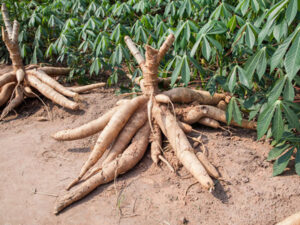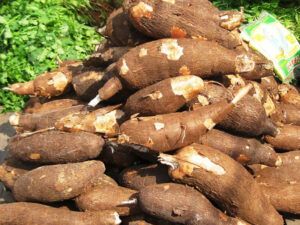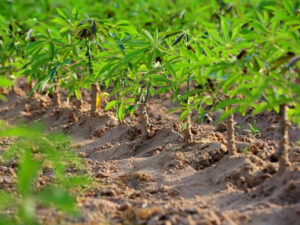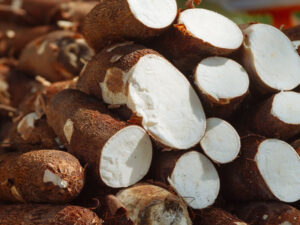Cassava is a plant with starchy roots that is also known as yuca. These are heavy in carbohydrates and include 30% starch. Cassava roots are cooked and eaten in the same way that potatoes are. Cassava is a root vegetable that originated in Bʀᴀᴢɪʟ and Pᴀʀᴀɢᴜᴀʏ, although it is now grown in many other countries.
So, what’s the difference between yucca and cassava? They are unrelated and prefer distinct climates to grow in.
The only thing they have in common is a similar name and the usage of roots as a food source. Cassava yuca requires tropical climes and at least eight months of warm weather to thrive.

The plant needs well-drained soil with little rainfall, but it can thrive in wetter conditions. Cassava roots do not tolerate cold temperatures and grow best in full sunlight.
It can take up to 18 months to grow cassava yuca from seed to harvest. Propagules formed from mature stem portions are used to initiate the plants.

There are multiple bud nodes along the length of these 2 to 3 inch (5 to 7.6 cm) cuttings. Place the cutting in a pot with prepared soil and keep it lightly misted in a bright spot.
Indoors, grow the cuttings until the temperature outside reaches at least 70 degrees Fahrenheit (21 C.). When the cuttings have sprouted and are at least 2 inches (5 cm) tall, transplant them outside.

Cassava plants generate massive lobed decorative leaves. In most parts of the United States, they can thrive as an annual in the summer.
Warmer temperatures encourage faster growth. Cassavas are relatively ᴅɪsᴇᴀsᴇ and pest-free, except for a few chewing pests that cause foliage ᴅᴀᴍᴀɢᴇ.

In the spring, cassava plants should be fertilized with a slow-release fertilizer. Keep the plants wet but not soggy.
Before winter temperatures strike, transplant the plant to a pot indoors. Cassava should be overwintered in a warm, well-lit place and transplanted outside after the soils have warmed up.

PLEASE WATCH THE VIDEO BElOW:
